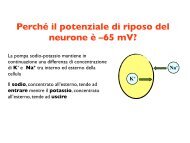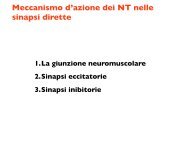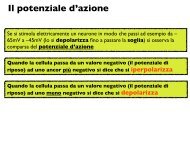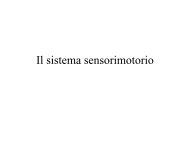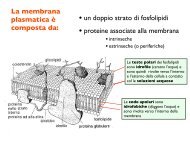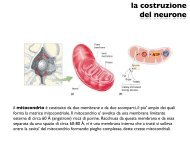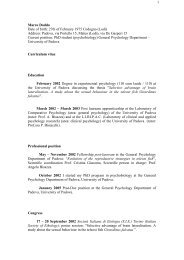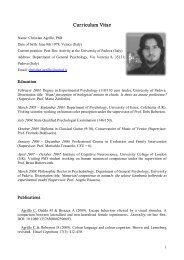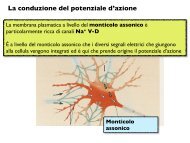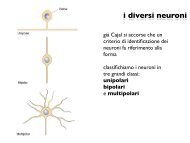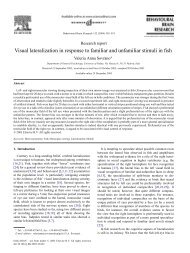Sexual behaviour of immature male eastern mosquitofish: a ... - CPRG
Sexual behaviour of immature male eastern mosquitofish: a ... - CPRG
Sexual behaviour of immature male eastern mosquitofish: a ... - CPRG
Create successful ePaper yourself
Turn your PDF publications into a flip-book with our unique Google optimized e-Paper software.
728 a. bisazza et al.<br />
mesh that retained specimens <strong>of</strong> every size. Before starting the experiments, individuals<br />
were acclimatized for some days in 130-l. aquaria (stock aquaria), maintained at a<br />
constant photoperiod (illuminated from 06.00 to 20.00 hours) and temperature<br />
(261 C). Fish were fed twice a day with commercial fish food (Tetra Min). For testing<br />
the influence <strong>of</strong> precocious experience on <strong>male</strong> sexual <strong>behaviour</strong> at maturity (Experiment<br />
3), <strong>of</strong>fspring born in captivity to some <strong>of</strong> the wild fe<strong>male</strong>s were used. All individuals to<br />
be used in the experiments were anaesthetized with MS222, sexed and measured to the<br />
nearest 0·5 mm total length (t.l.).<br />
MATURATION STAGES OF MALES<br />
Maturation stage <strong>of</strong> <strong>male</strong>s was determined by examining the development <strong>of</strong> the<br />
gonopodium under a dissecting microscope. Ten stages were identified (Dulzetto, 1931).<br />
Briefly, the development <strong>of</strong> the gonopodium starts with the elongation <strong>of</strong> the 3rd, 4th and<br />
5th rays <strong>of</strong> the anal fin (stage 1 to 4); at stage 5 the length <strong>of</strong> the gonopodium is similar<br />
in length to that <strong>of</strong> mature <strong>male</strong>s, and rays 3 to 5 begin to develop distally bifurcated<br />
articules that, at stages 8 and 9, form a series <strong>of</strong> hooks. At stage 8 the gonopodium can<br />
be turned forward. At stage 9 the gonopodium, previously opaque, becomes transparent.<br />
At stage 10 the distal articles <strong>of</strong> the gonopodium become fused. The maturation <strong>of</strong> the<br />
gonopodium is paralleled by the progressive maturation <strong>of</strong> the testes, which is completed<br />
at stage 9, but <strong>male</strong>s are able to inseminate fe<strong>male</strong>s only at stage 10, when the<br />
gonopodium is completely developed (Dulzetto, 1933).<br />
FREQUENCY OF COPULATORY ATTEMPTS IN IMMATURE MALES<br />
One hundred and forty-six <strong>male</strong>s at different stages <strong>of</strong> sexual maturation were tested.<br />
The day before each test, one <strong>male</strong> was introduced in one <strong>of</strong> six 603636 cm aquaria,<br />
each containing two acclimated adult fe<strong>male</strong>s. Only fe<strong>male</strong>s that had not delivered young<br />
recently were used, because the frequency <strong>of</strong> attempts by <strong>male</strong>s is significantly higher with<br />
post-partum fe<strong>male</strong>s (Bisazza et al., 1989). Each <strong>male</strong> was observed for two periods <strong>of</strong> 10<br />
consecutive minutes, at least 30 min apart, and copulatory attempts were counted. At the<br />
end <strong>of</strong> each test, the <strong>male</strong>s were anaesthetized, measured, and the stage <strong>of</strong> maturation <strong>of</strong><br />
the gonopodium was determined.<br />
FREQUENCY OF AGGRESSIVE BEHAVIOUR OF ADULT RESIDENT MALES<br />
TOWARD IMMATURE MALES<br />
One hundred and thirty-one <strong>male</strong>s in different stages <strong>of</strong> sexual maturation were tested.<br />
Experimental conditions were similar to those <strong>of</strong> above, the only difference being that one<br />
adult <strong>male</strong> (resident) was also present in each experimental aquarium. Thus, each<br />
aquarium contained three adults (one <strong>male</strong> and two fe<strong>male</strong>s). The test <strong>male</strong> (from stage<br />
1 to 10 <strong>of</strong> maturation) was introduced 1 day before being tested. The resident <strong>male</strong> was<br />
always larger than the test <strong>male</strong>. During the two periods <strong>of</strong> observation recordings were<br />
made <strong>of</strong> the number <strong>of</strong> attacks directed by the resident <strong>male</strong> to the test <strong>male</strong>, the number<br />
<strong>of</strong> attacks from the test <strong>male</strong> to the resident, and the number <strong>of</strong> copulatory attempts by<br />
the test <strong>male</strong>. At the end <strong>of</strong> each test, total length and maturation stage were determined<br />
for both <strong>male</strong>s.<br />
EFFECT OF PRECOCIOUS SEXUAL EXPERIENCE ON THE EFFICIENCY OF<br />
MALE COPULATORY BEHAVIOUR<br />
Thirty <strong>male</strong>s were used. Fifteen <strong>of</strong> them were grown from birth to sexual maturity in<br />
130-l. aquaria containing adult fe<strong>male</strong>s (experienced <strong>male</strong>s). The other 15 <strong>male</strong>s were<br />
grown in similar aquaria, but adult fe<strong>male</strong>s were not present (naïve <strong>male</strong>s).<br />
Upon reaching sexual maturity, each <strong>male</strong> was tested in aquaria (707036 cm)<br />
containing four adult fe<strong>male</strong>s. Observations started 1 min after the <strong>male</strong> was introduced,<br />
and continued for 30 min. Since the success <strong>of</strong> the copulatory attempts depends strongly<br />
on the ratio <strong>of</strong> <strong>male</strong> to fe<strong>male</strong> length (Bisazza & Marin, 1991), the four fe<strong>male</strong>s in the<br />
experimental aquaria were similar in size, and the <strong>male</strong> to fe<strong>male</strong> length ratio was kept as




